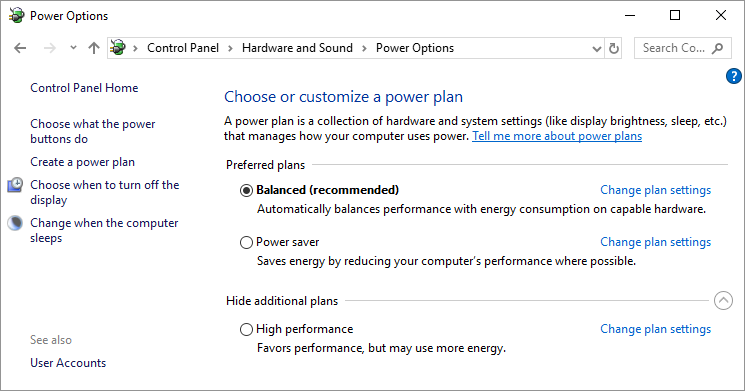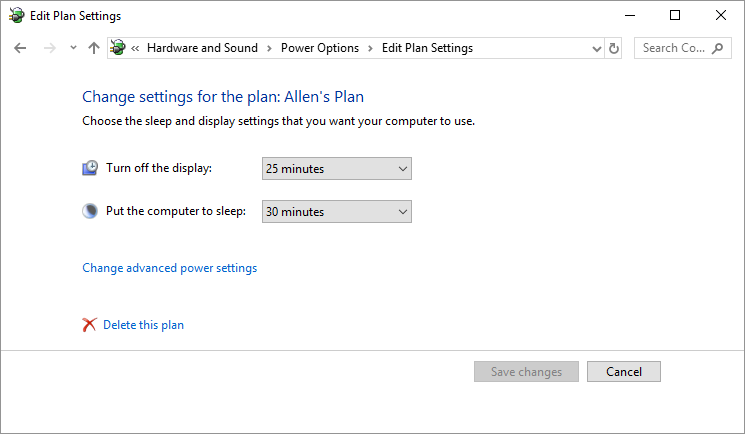Most modern computers allow Windows to control both the computer itself (including the hard drive) and the display monitor. These components can be set to automatically "turn off" after varying amounts of inactivity. Windows even allows you to create your own custom power management plans. At some point, however, you may want to get rid of a custom plan that you no longer need. Follow these steps:

Figure 1. The Power Options screen.

Figure 2. The Edit Plan Settings screen.
Remember that you can only delete custom power management plans—those you've added to Windows. You cannot delete the built-in power management plans (Balanced, High Performance, Power Saver, or any created by your computer manufacturer).
![]()
![]()
![]() This tip (10718) applies to Windows 7, 8, and 10.
This tip (10718) applies to Windows 7, 8, and 10.
Windows is great about letting you work on multiple things at the same time. Often, however, you end up with so many ...
Discover MoreYou can easily change which power scheme is active by using the SetActive switch. This tip shows you how.
Discover MoreBluetooth allows electronic devices to connect wirelessly. Discover how easy it is to connect a Bluetooth keyboard to ...
Discover More2019-02-18 22:45:21
John Simkins
Allen:
Your details for the topic "Deleting a Power Management Plan" (10718) are too different from what I am seeing here on my PC, running Win7 Home Premium SP1 64Kb, to follow the steps. Does this particular topic not apply to my Win7? Thanks.
Copyright © 2024 Sharon Parq Associates, Inc.
Comments